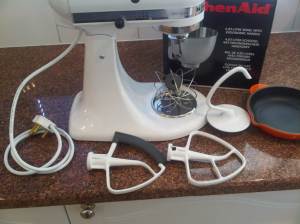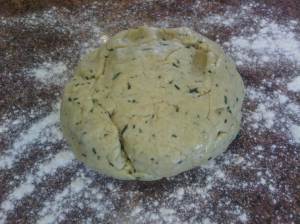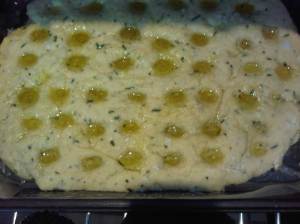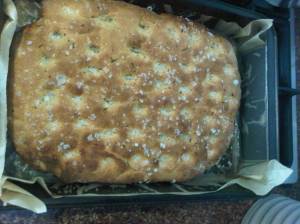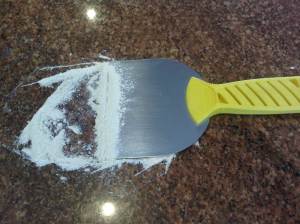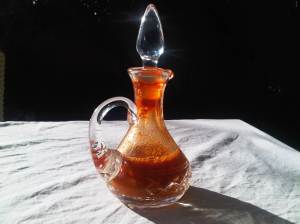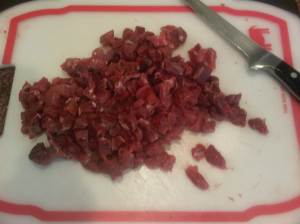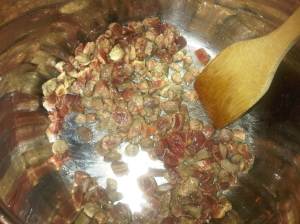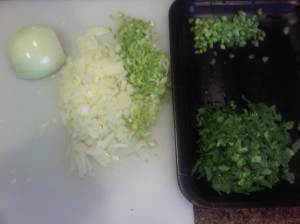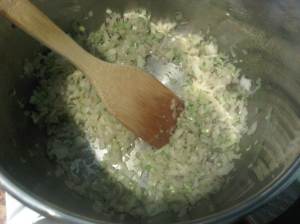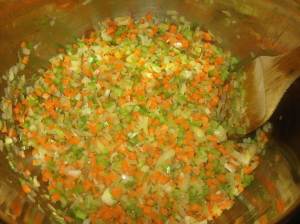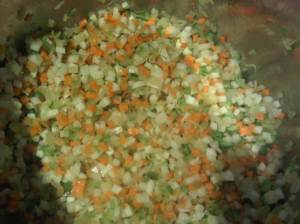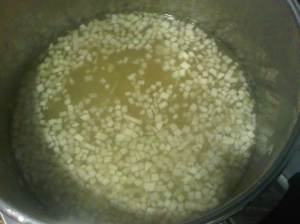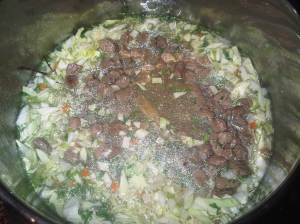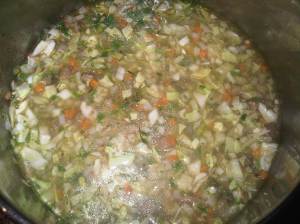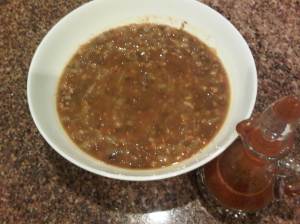Once again, far too many days have slipped past without a post. This is going to be a quickie, too, because Kitty and I have a table waiting at Tsuyu for some sushi – the best in Jo’burg, many say…
Two quick meals to write up, both of which provided some tasty leftovers for lunch or dinner during the week.
First up, cheating with beef olives: All the recipe books tell you how to make your own beef olives, and, I’m sure, all the purists would tell me that DIY is the only way to go. This, however, is about bachelor cooking – so the odd cheat here and there is the norm. This includes beef olives, which I buy in raw, but cook in a sauce of my own making.
For those of who in the northern parts of Johannesburg, the German butchery at Deco Park, Northriding (Tirolean Meat aka Berliner Deli and Grill) supplies superb meat, including beef olives. Trusty Woolworths also sell great beef olives. I usually allow two per person (plus a left-over allowance), as the meal tends to be rich and filling once you factor in gravy and starch. A great winter dish.
Earlier this week, as I continued my quest to empty out my freezer (to make room for some new leftovers, of course!), I found some beef olives hiding under a cover of frost and decided that their time had come to be eaten. I also found some gravy left over from my last beef olive cook-out, so thawed that out, too. As you’ll see from the following write-up, this dish managed to consume a few more leftover-survivors before I was done.
I have used Gordon Ramsay’s “Angus beef olive” recipe several times. He makes a simple gravy using flour, tomato paste, red wine and beef stock. This time around, however, I felt like something different – and the leftover gravy was nowhere near enough for the frost-burnt beef olives I was seeking to eradicate. I also had some carrots and celery lurking in the fridge. A quick Google search turned up a BBC Food recipe (http://www.bbcgoodfood.com/recipes/1157635/beef-olives) that provided the desired inspiration.
Once again, my faithful Jamie Oliver / T-Fal sauté pan was hauled onto the stove. I put the oven onto 180C to heat up whilst warmed some olive oil in which I melted some butter, then browned the beef olives. The trick, I think, is to brown them quickly, but not at too high a heat, in the hope that they will not become tough (fat chance with this frosty survivors, sadly). Whilst the beef olives kept warm in a casserole dish, I first fried up some bacon pieces, then sautéed some chopped carrot, celery and onion. I’d also found some dried porcini mushrooms hiding in the fridge (yet another chance to clean out the appliance), and put them into some warm water to reconstitute.
Once the vegetables had softened a bit, I lobbed in half a tin of jam tomatoes (yet another find from the freezer compartment) and a big squeeze of tomato paste, and let things simmer a while longer. I mashed up the tomato pieces, then added some glugs (very scientific measurements, these) of fine red wine and beef stock. That was followed by the now-soft porcini mushrooms, as well as the water they had been soaking in. A few more minutes on a low simmer, some salt and freshly-ground black pepper, and things were tasting very good indeed. If I was going to leave the sauce as-is, I would probably have added some mustard earlier in the process. This time around, however, I had that leftover gravy to use, so lobbed that into the pan to warm through. It already had some mustard in it.
Once the oven was up to temperature (180°C), I poured the gravy over the beef olives in the oven-proof casserole dish, put the lid on and popped it all into the oven for 20 minutes or so. It was all rather delicious over some plain basmati rice, washed down with the remnants of the bottle of red wine that I’d opened to make the gravy. I liked the slightly chunkier gravy, with the cubes of carrot, celery, onion and bacon. Some recipes I saw online suggested pureeing things to get a smoother gravy, but I don’t think that would be necessary. I enjoyed the remaining beef olives, rice and gravy for lunch today (no wine, sadly), sitting outside on the patio enjoying the winter sun.
The second dish I cooked recently (last Sunday, to be precise, although the preparations were made on Saturday) was Chicken Yassa. Google tells me that Yassa is a West African dish – originally, it seems, made with monkey! The Chicken Yassa recipe that caught my attention, however, was at the back of my Larousse Gastronomique (yet another epicunary gift from Kitty). Of course, I could not bring myself to follow the recipe exactly, so made a tweak or two – and, when I repeat it, I will make further changes. Google, again, informs me that there any number of variants on the theme.
Given that I had no monkey (not something normally found on the shelves at Woolworths, unless it is someone’s ill-bred and ill-behaved loin-spawn…) and I did not feel like jointing a whole chicken, I cheated (again, as usual, как обычна) by using chicken portions. I had some chicken drumsticks and wings lurking in that freezer I somehow never manage to empty, and bought some fresh thighs and drums to extend the quantity (I think I cooked 2 thighs and 4 each of the drums and wings).
I had some fresh limes lurking in the fruit bowl, so zested and juiced 3 of them. The juice plus some of the zest went into the mixing bowl (the original recipe did not call for zest, but I feel that it adds a spark to dishes) along with a glug of peanut oil, two chopped chillies (again, a not-so-slight increase on the recipe’s quantity), salt, freshly-ground black pepper and three onions, sliced. Next time around, I think that only 2 onions will suffice. I sliced them into rings but, next time, I would halve them before slicing, or cut them across the rings into little wedges (much like one would cut them for Thai cooking, or stir-fries). I think that, next time, I might add a crushed clove of garlic, too.
I put the chicken pieces into a large freezer bag, inside a bowl, poured in the marinade, then squeezed out the air and knotted the top of the bag. The bowl with the bag of marinating chicken went into the fridge around lunchtime on Saturday, and sat there until Sunday lunchtime. Every few hours I would work the bag and move the chicken pieces around, ensuring that everything got covered in the marinade.
On Sunday, I lit a fire in the Weber and let burn down to a nice set of hot coals, then emptied the contents of the marinade bag into a colander over a bowl. I picked out all the chicken pieces, which I browned over the coals of the fire. Importantly, you’re not aiming to cook the chicken all the way through – you’re just aiming to brown the skin and impart that lovely, smokey fire flavour to the meat. The onions went into that reliable T-Fal sauté pan, with a little oil, to soften and brown, and the marinade went to one side. Once both the chicken and the onions had browned, they were reunited in the pan, along with the marinade. The lid was popped on and they were all left to simmer for 20 minutes or so, whilst the rice finished steaming.
Lunch was then served: the chicken pieces placed on a bed of steamed basmati rice, with the onions forked on top and a few spoonfuls of the sauce poured over the whole lot. Delicious! (the leftovers served as dinner during the week).
